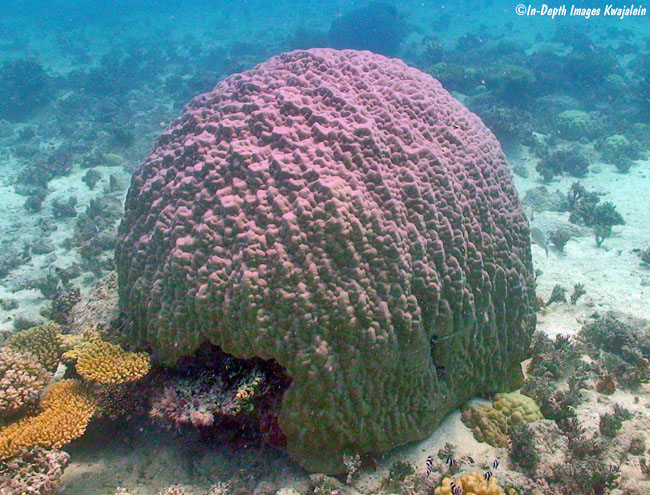
I'm not sure where to draw the line between Porites lobata and P. lutea, so the IDs on these photos are questionable. Both species form massive solid colonies that may be several meters in width, and both may occur in the same areas. It may require close examination of the corallites to properly distinguish them. It is a common species on lagoon and seaward reefs, and often forms microatolls on intertidal reefs. Color varies.

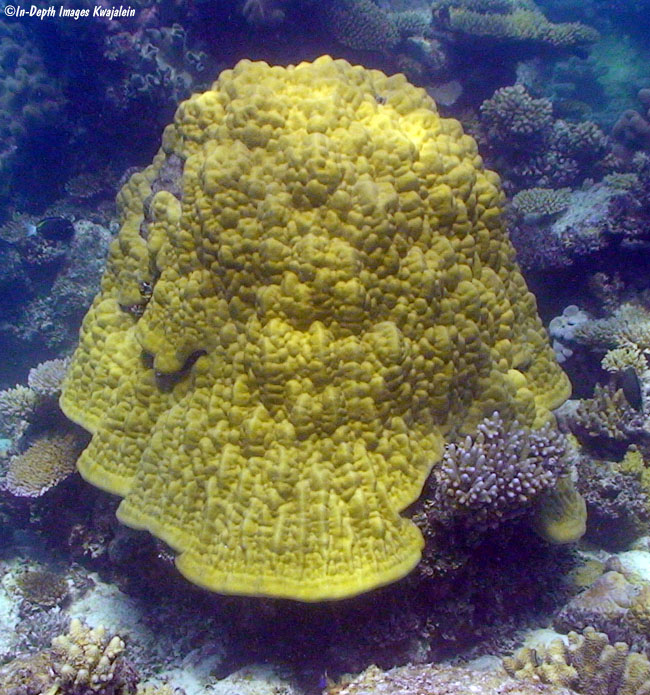
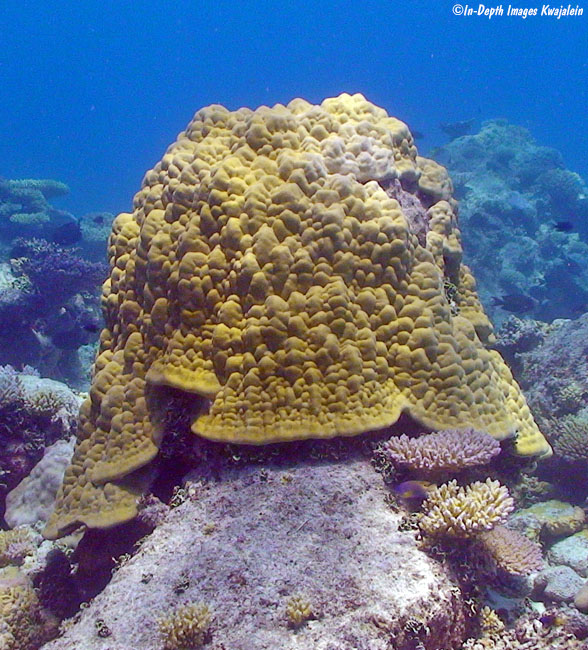
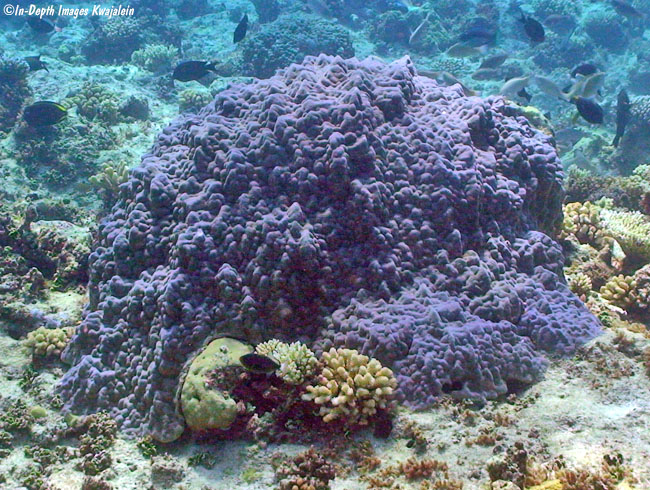
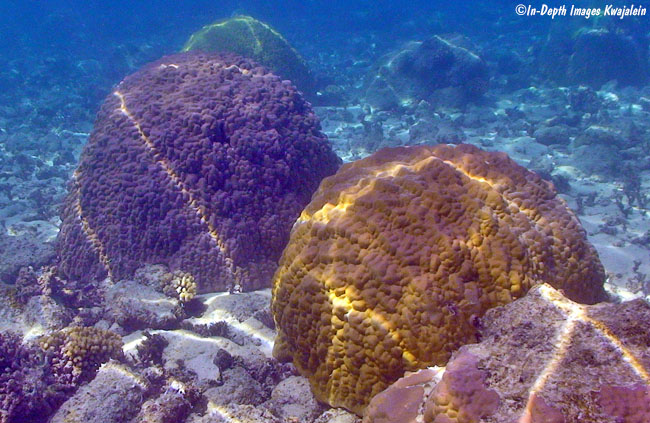
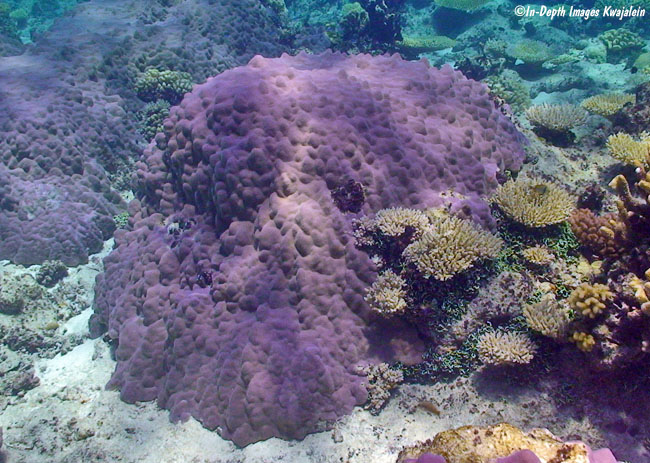
Porites are moderately affected by warmer water causing coral bleaching. Top portions of the colonies most exposed to direct sunlight were the first to bleach. More Porites bleaching can be seen on a separate page.
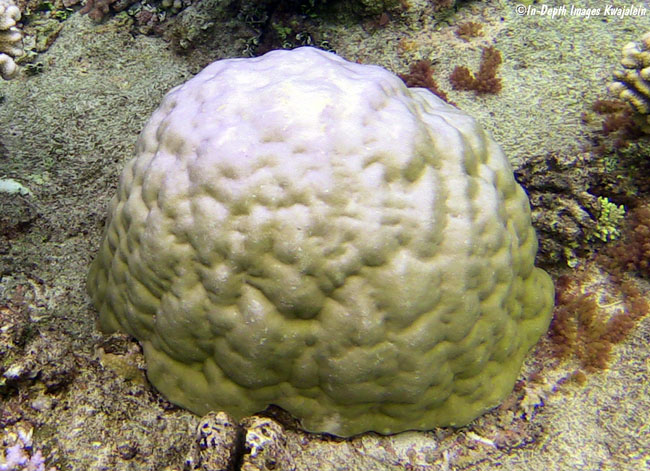
Porites were typically more resiliant to bleaching, however, than some species such as the white Goniopora growing on the side of the Porites below. Goniopora was one of the first to bleach as soon as water temperature reached 30°C (86°F) and most of this species at Kwajalein has died.
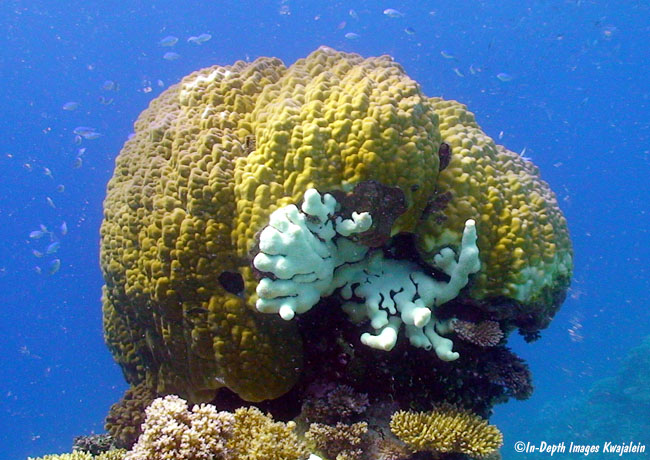
When these massive Porites colonies grow in shallow water on the intertidal reef, the tops of the colonies die from exposure to air and drying at low tides, so the living coral grows outward from around the edge. These colonies are called microatolls in an analogous reference to a coral atoll that generally possesses its most vigorous living reef around the outer edge.
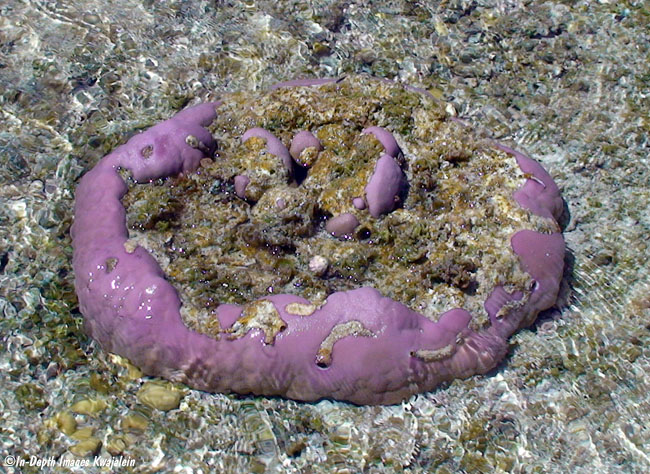
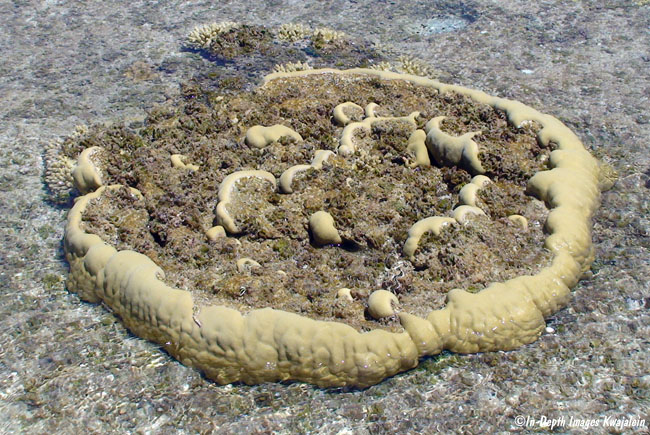
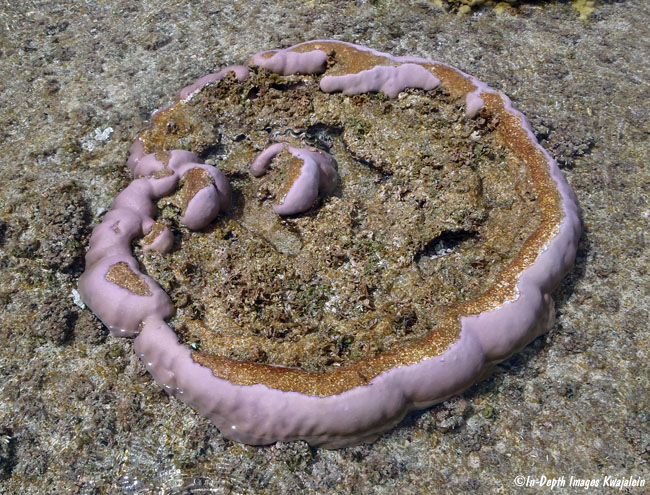
Created 20 April 2020